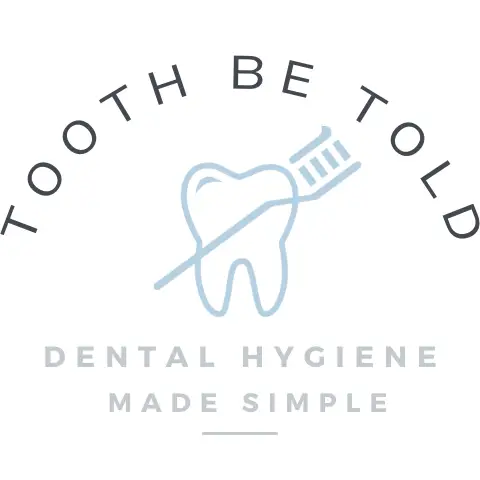
Adult oral hygiene care can be confusing and overwhelming.
Do you ever find yourself just staring into the abyss in the dental aisle at your local Walmart or drugstore?
What actually works and what doesn’t? Businesses constantly target us to buy their products. And sometimes, their genius marketing techniques can get the best of us. I know I’ve been there a few times myself.
Below are some resources I use myself and recommend to my family, friends and patients.
Do you know how hard or soft your toothbrush is? Softness is key!
Manual toothbrush
Not all toothbrushes are made the same. You get what you pay for.
Did you know the average toothbrush has 500-800 bristles?
Did you know the average toothbrush bristles are made out of nylon that absorbs water and bacteria?
Did you know the average toothbrush bristles are too short to reach along the gumline and bend underneath to clear away the biofilm?
The softer the brush, the easier it will bend and contour around your teeth and under your gum tissue. Giving you a much more effective and gentle clean.
There is a toothbrush that has enough bristles to be the most effective, long enough bristles, and bristles made out of a polyester material that will not absorb water and bacteria. This allows the toothbrush to last a bit longer than other toothbrushes, lasting about 4 months (I say every season for my fellow Canadians).
The gold standard manual toothbrush is the Curaprox manual brush.
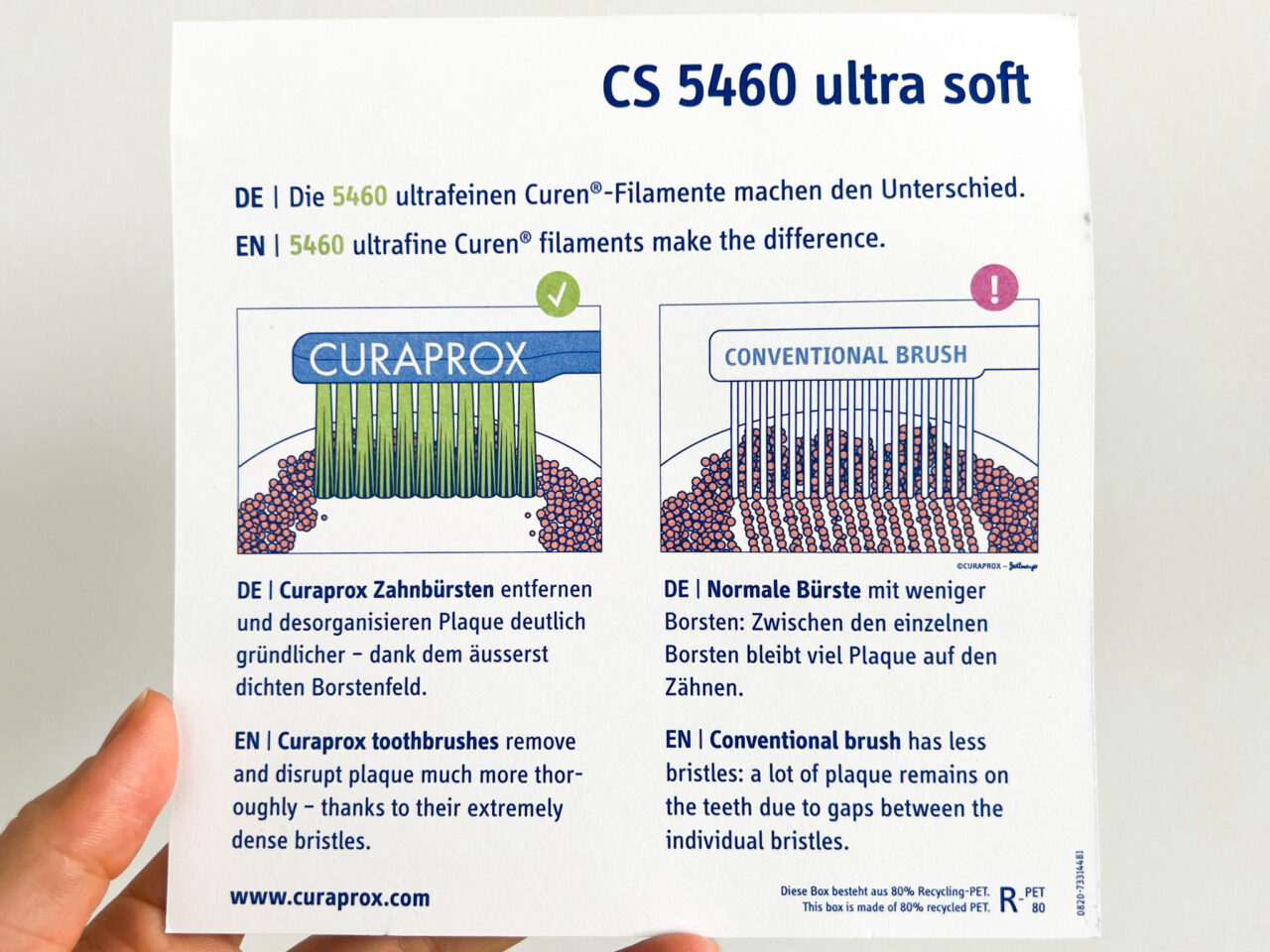
Curaprox is my all-time favourite toothbrush. For adults, it comes in two different models: the 5460 and the 12460 velvet toothbrush.
These toothbrushes get their names by the number of bristles they have. (Quite a few more bristles than the average manual toothbrush)
- The Curaprox 5460 has 5460 bristles (Amazon link)
- The Curaprox 12460 has 12460 bristles
 (Amazon link)
(Amazon link)
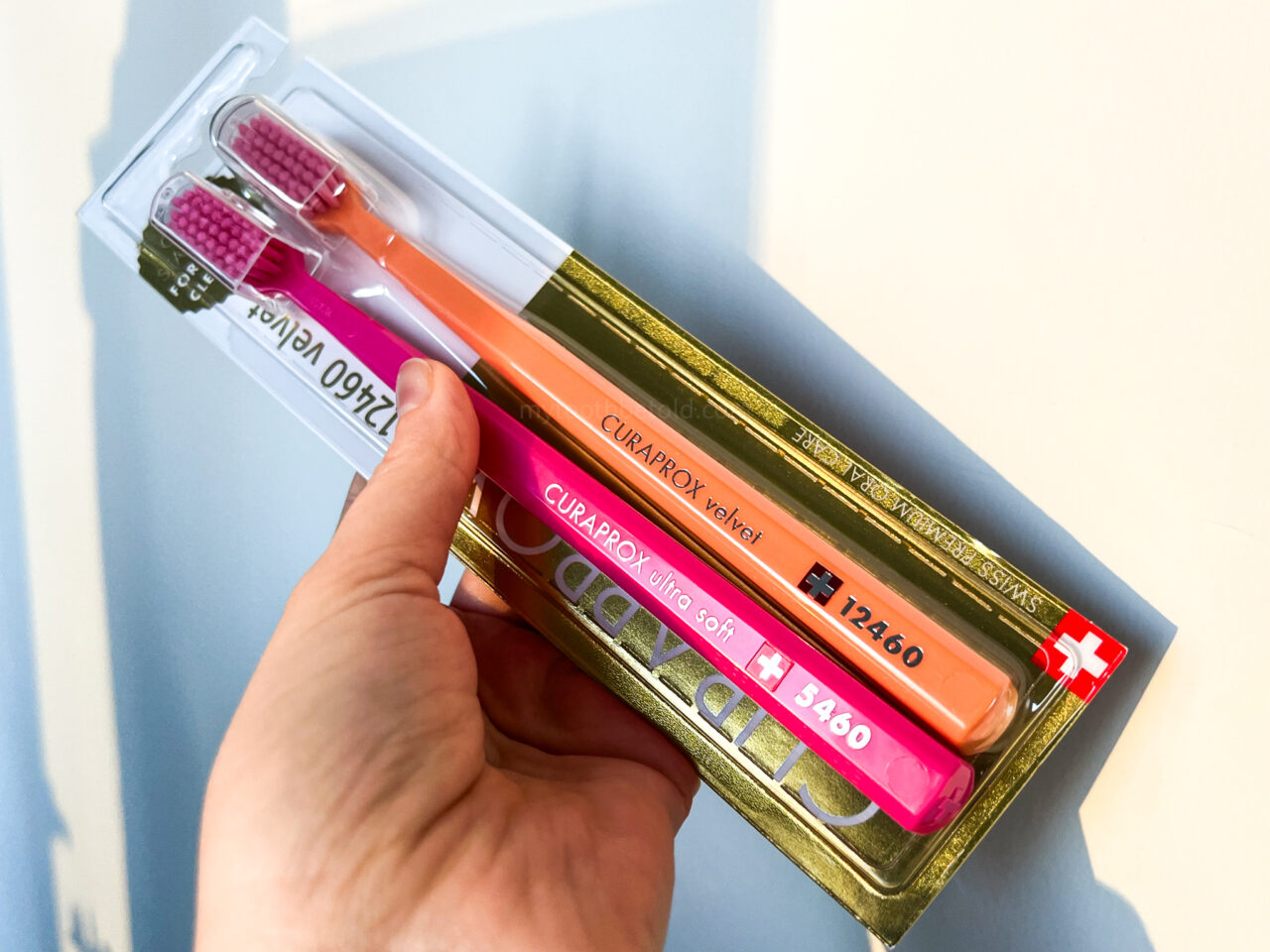
The handle is perfectly designed to help you get a 45-degree angle on the gum line, has extra soft bristles, and is more resilient to bending. As I previously mentioned, the toothbrush will last longer than the average toothbrush.
Electric toothbrush
An electric toothbrush (when used properly, not scrubbing and using light pressure) prevents wear on the gums and teeth, which can lead to sensitivity. It does the job for you and moves properly to avoid gum wear.
An electric toothbrush with a small head is essential to contour effectively around the teeth and gums. A small brush head is key.
There are many brands of electric toothbrushes, and I believe that as time goes on, we learn about what factors each contributes to the best product possible.
Curaprox created an electric toothbrush called the Hydrosonic Pro that;
- uses polyester bristles that don’t absorb water (maintains bristle effectiveness and lasts longer)
- a small brush head (single)
- supports the hydrodynamic cleaning effect
- and adds curvature to the brush heads for better adaptation of the brush to the teeth and gums.
Brush heads are the most important factor in any electric toothbrush. And this is why the Curaprox electric toothbrush is one of the best on the market. Purchase the Curaprox Hydrosonic Pro . (Amazon link)
. (Amazon link)
The toothbrush head is the perfect size to contour around the teeth and the gumline. Teeth are tiny and have tiny nooks and crannies. When a brush head is too big, you miss those tiny spaces.
The Curen polyester bristles do not absorb water, which allows the performance to stay consistent and extremely soft.
They also include a single small brush head, perfect for cleaning implants, bridges, braces, wires, and between teeth, especially if teeth are misaligned. The three brush heads the toothbrush comes with are shown below.
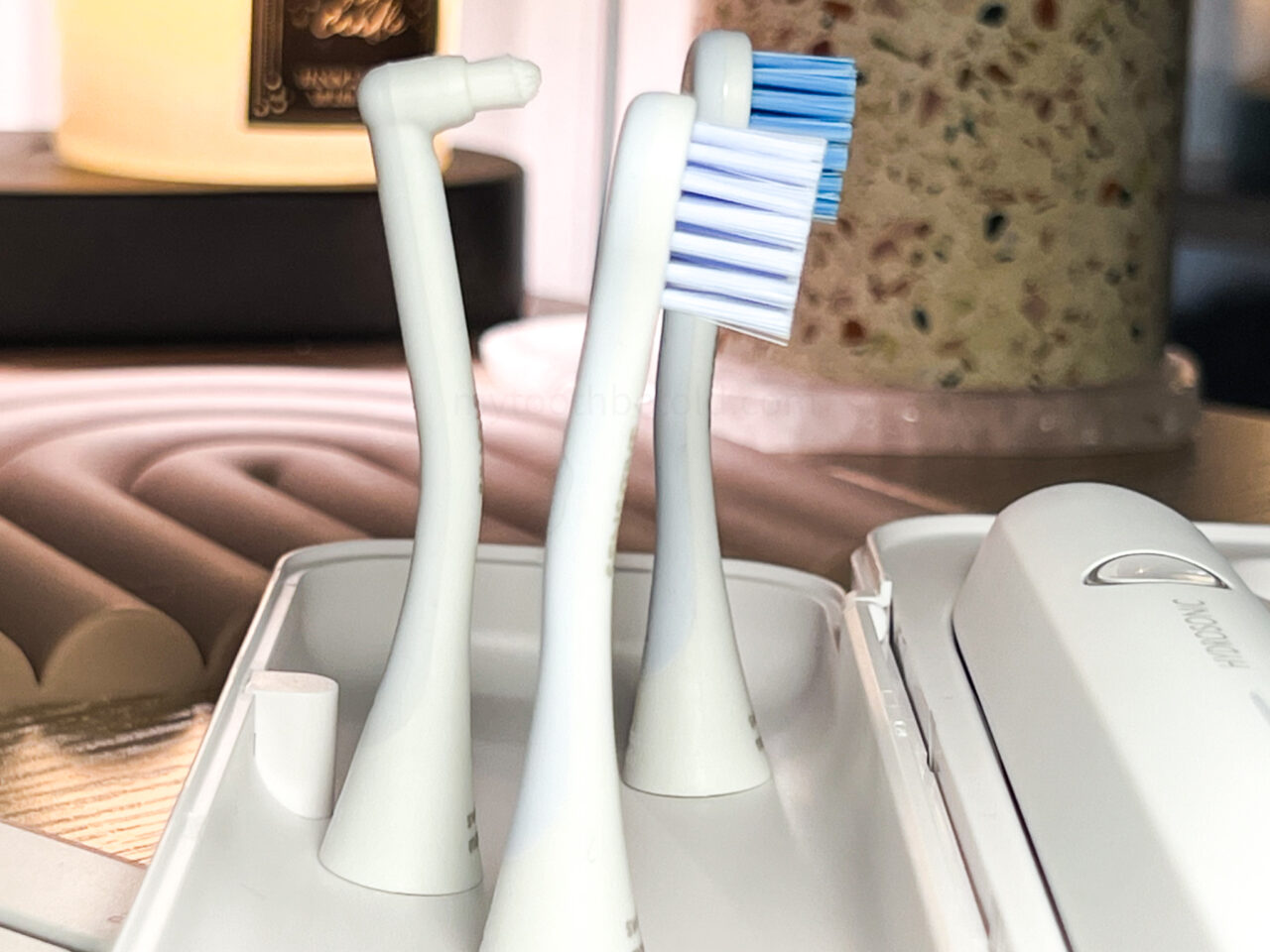
Replacement heads
You can buy the replacement brush heads for the Curaprox Hydrosonic Pro on Amazon. Here is the link to purchase on Amazon.
The softer the brush, the easier it will bend and contour around your teeth and under your gum tissue. Giving you a much more effective and gentle clean.
Other fantastic electric toothbrushes are on the market, but the Hydrosonic Pro hits every requirement I look for in an electric toothbrush.
Flossing
There are different ways to floss. Finding what works best for you will help you build a habit and provide you with a healthier mouth and body.
I have patients who do not like string floss and are not compliant but become compliant with floss picks. I would rather see a patient of mine floss 4-5 times a week with a floss pick than only 1-2 times a week with string floss or use interdental brushes that have specifically been measured to size for their mouth.
Again my biggest thing is to use a product you will be consistent with.
String floss
I often hear complaints about string floss being too hard to use or just shredding and breaking. If the floss is too thick, shedding can occur. Try looking for thinner waxed floss.
Sometimes, a little tweaking in technique can make all the difference in reaching those far-back teeth or getting the floss to glide between the teeth.
My favourite floss is Cocofloss (Amazon link) . Cocofloss is a rope floss with many different delicious flavours, invented by a female dentist and her sister. The rope is more effective than tape floss because it is sponge-like in texture, grabbing hold of more bacteria and food debris from under the gumline and in between the teeth.
. Cocofloss is a rope floss with many different delicious flavours, invented by a female dentist and her sister. The rope is more effective than tape floss because it is sponge-like in texture, grabbing hold of more bacteria and food debris from under the gumline and in between the teeth.
Read Now: How to string floss like a dental hygienist!
Floss picks
Floss picks are a great tool for motivating people to floss; sometimes, circumstances make them a better option.
For example, the last thing I want to do on a long plane ride is stick my fingers in my mouth and floss my teeth, so I always bring a pack of floss picks with me. Or, if I am out to dinner and need to get some spinach out between my teeth quickly, I can use a floss stick in the bathroom quickly.
Water flosser (Waterpik)
The Waterpik definitely has its pros and cons.
The con is that it does not replace flossing, but the pros are a little more substantial.
I find that people become more compliant with a Waterpik vs regular string floss. As well as for people going through braces or other dental procedures.
The Waterpik is so good because it can reach places that regular string floss cannot.
If your tooth were cross-sectioned in half, it would look like a warped figure 8. In the middle of the figure 8, the floss will stretch over it, not actually removing the bacteria and food debris there. The image below shows an example of the uneven surface of the tooth roots.
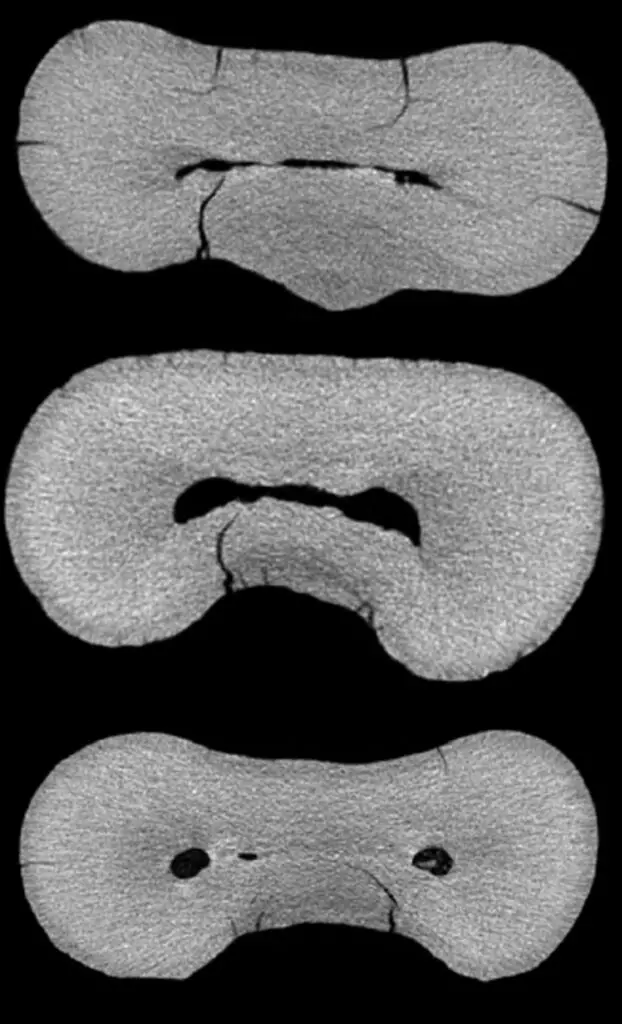
This is why regular Waterpiking will help to blast that bacteria and food debris out of there, making the area cleaner.
This root shape is also why floss is sometimes not the best choice, and using an interdental brush is more effective.
But not all interdental brushes are made the same. You need a strong wire foundation that is less likely to bend and break and long enough bristles to contour in the grooves of the teeth and below the gumline.
Interproximal brushes
I want to piggyback on the previous section, where I discussed the concavities on the root surface where floss cannot reach.
Often, interdental brushes do a better job than floss because they reach a larger surface area.
And as I previously mentioned, not all interdental brushes are made equal. You need the space between your teeth measured to ensure you are using the correct size.
You also need to measure the space between your teeth, and your dental professional should measure the space and guide you to the right size. It is like fitting a car with new tires. You need to know the correct wheel dimensions of your vehicle, or they won’t fit well, damaging the car or making it inefficient.
With Curaprox interdental brushes, your dental professional will measure how big the space is between your teeth. The measurement tool is colour-coded and coincides with the colour of the interdental brush to use.
When you first start using the interdental brushes, you may just start by using them in areas where you have more inflammation. It can be overwhelming if given more than one at a time.
I started with one for a few areas where I have a food trap and then moved on to using 2 to 3 different sizes.
Other gadgets
Tongue scraper
Think of your tongue like a carpet. The number of bacteria and food particles that get caught between the taste buds on your tongue is unimaginable.
You can brush your tongue with your toothbrush; many brushes come with a tongue cleaner on the back of the toothbrush head. However, I don’t always recommend using these because brushing too hard back and forth can damage the taste buds, and they are less effective than using a tongue scraper.
This is the tongue scraper that I use. (Amazon link.) I put a picture of it below.
I put a picture of it below.
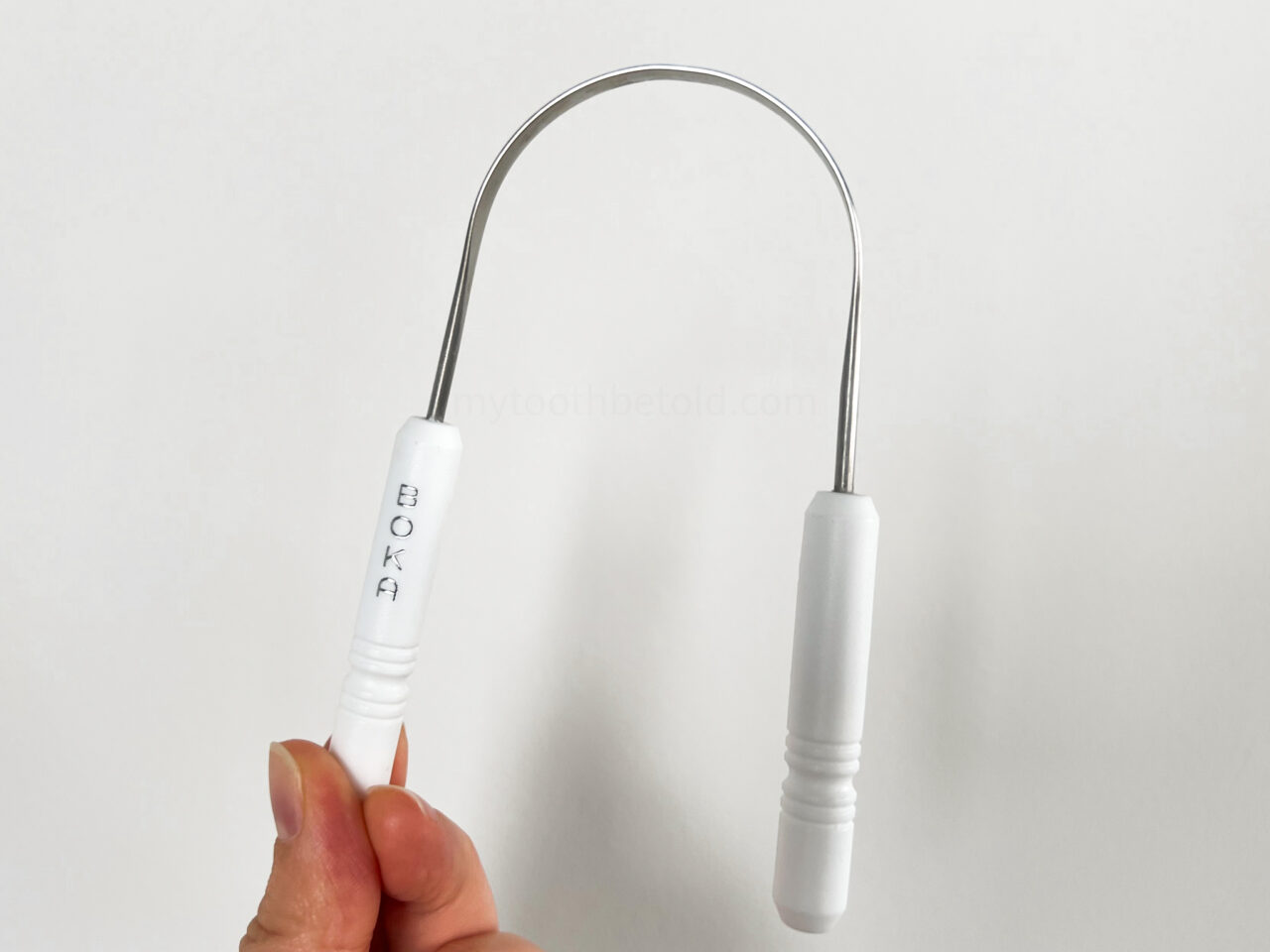
I wrote a post all about tongue scrapers and tongue brushes. You can find it linked below.
Read now: Should You Brush or Scrape Your Tongue? Which is better?
An added note on technique: tongue scrapers are meant to be used back to front. This prevents damage to the tongue’s top surface and removes most bacteria and food.
I hope all this information has been useful for you and you are on your way to a healthier, happier you!
Keep smiling,
Holly 🙂
